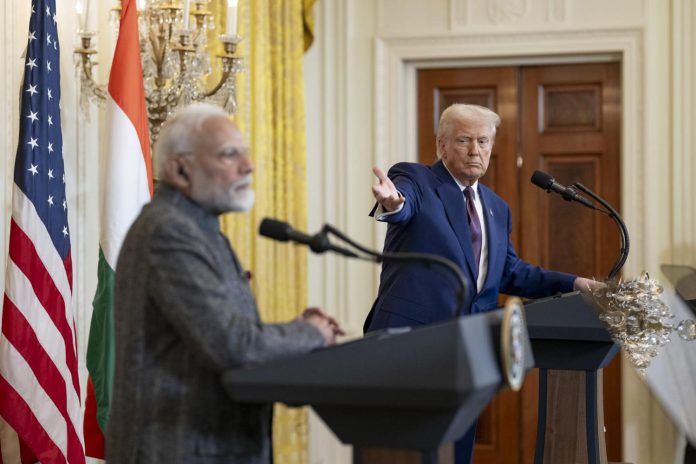By Qalam Times News Network
Synopsis:
Tariffs imposed by the U.S. are expected to strain American households with inflation-led expenses averaging $2,400, while India’s diversified trade base cushions its economy, says SBI report.
U.S. Tariffs Drive Up Inflation, Squeeze Households Across Income Levels

Tariffs introduced by the United States are likely to deliver a sharp blow to American consumers, with the average household expected to shoulder an additional $2,400 in short-term expenses, according to a new analysis by the State Bank of India (SBI). The increased cost burden stems from inflationary pressure triggered by the renewed trade restrictions.
The report emphasizes that this inflation won’t be felt equally. Low-income families could lose around $1,300—nearly triple the relative strain compared to their wealthier counterparts. Meanwhile, higher-income households may see losses of up to $5,000, though their financial resilience will likely soften the blow.
Inflation Set to Surpass Fed Target, GDP Growth Outlook Takes a Hit
The SBI report paints a concerning picture for the U.S. economy. Inflation—already on the rise—is now expected to stay above the Federal Reserve’s 2% target through 2026. The immediate consequence? A 40–50 basis point drop in U.S. GDP due to rising input costs and weakened consumer demand.
Tariffs are expected to significantly raise prices in sectors heavily dependent on imports, including electronics, automobiles, and consumer goods. With the dollar weakening and inflation climbing, the trade war fallout is expected to hit America harder than India.
India’s Trade Diversification Offers Cushion Against U.S. Measures
Despite the U.S. being India’s largest export market—making up about 20% of its exports in FY25—the report notes that India is better positioned to weather the storm. Thanks to its diversified trade profile, where the top 10 countries together account for only 53% of exports, India is less exposed to concentrated trade risks.
SBI concludes that while both countries will face economic challenges, the tariffs are set to inflict deeper damage on the U.S. than on India.
Political Overtones Deepen Trade Tensions Amid Tariffs
The fresh 25% tariff, along with an unspecified penalty on Indian goods, stems from long-simmering tensions. Former President Donald Trump cited India’s trade with Russia and existing high tariff barriers as justifications for the move. The announcement wasn’t entirely unexpected—U.S. Trade Representative Jamieson Greer had hinted at a stalemate, while Indian officials had cooled talks on a mini-deal weeks ago.
What’s new is the shift in tone. Trump recently made pointed remarks about India’s economy and energy dealings, indicating a deeper strategic rift. Despite the rhetoric, neither side has shown willingness to compromise. The U.S. continues to demand greater market access, especially in agriculture and dairy, while India remains firm on protecting its domestic sectors.
Negotiating a Bilateral Trade Deal Just Got Tougher
Hopes for a full-fledged Bilateral Trade Agreement (BTA) remain uncertain. India’s Commerce Ministry has reiterated its stance on sovereignty in trade decisions, especially regarding Russia. But with U.S. tariffs now putting Indian exports at a disadvantage—especially against competitors like Vietnam, Malaysia, and South Korea—the pressure is mounting.
Indian trade associations have raised concerns, and negotiators face an uphill battle. As tariffs become both a tool of economic and geopolitical pressure, the road to an equitable trade deal grows more complicated.








https://shorturl.fm/dsBvU
https://shorturl.fm/MrXAf